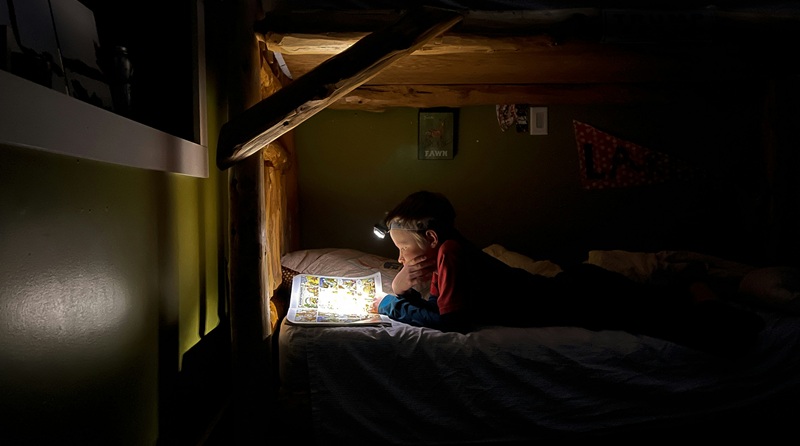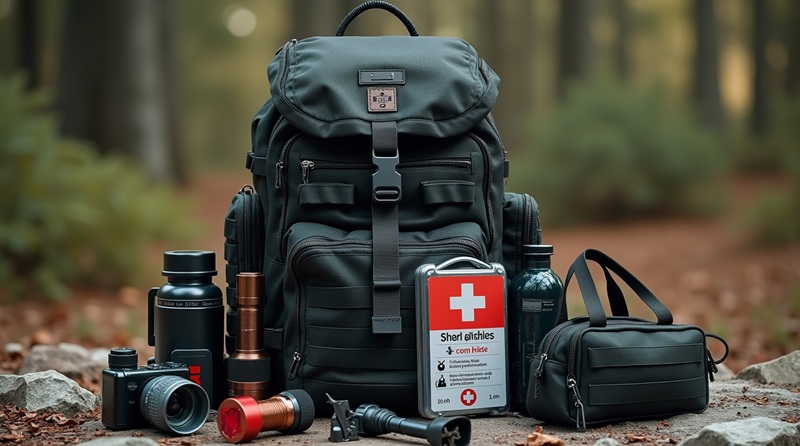Massive or prolonged power outages are no longer science fiction. Storms, cyberattacks, grid overloads… a blackout can paralyze an entire city within minutes.
Preparing for this scenario ensures safety, comfort, and autonomy-even without electricity for several days.
Risks Related to a Blackout
- Lack of heating or air conditioning, which can quickly endanger health.
- Freezers and refrigerators unusable, leading to major food loss.
- No Internet, phone, or TV-informational isolation.
- Security systems (alarms, lights) disabled, increasing intrusion risks.
- Heightened stress, especially in dense urban areas.
Priorities for a Resilient Home
1. Energy and Electricity
- Portable solar generators such as EcoFlow Delta Pro or Bluetti AC200P for long-lasting, silent autonomy.
- Foldable or fixed solar panels adapted to different needs and budgets.
- Portable backup batteries (powerbanks, energy stations) for charging phones, radios, and small devices.
- Small thermal generators as backup, running on gas or gasoline.
2. Lighting
- Rechargeable, energy-efficient LED lamps for long-lasting lighting.
- Solar or dynamo lanterns to avoid dependence on disposable batteries.
- Long-burning candles, used with caution to prevent fire hazards.
3. Heating and Cooking
- Portable gas stove with cartridges for easy cooking.
- Wood stove or non-electric space heater for cold seasons.
- Stock of thermal blankets, essential to prevent hypothermia.
4. Water and Hygiene
- Stock of drinking water (at least 3 liters per day per person).
- Portable filters such as Sawyer Mini or Berkey to ensure potability.
- Purification tablets for treating water.
- Reserves of sanitary water in tanks or jerrycans.
5. Communication
- NOAA emergency radio (e.g., Midland ER310) to receive official alerts.
- Long-range walkie-talkies for local communication independent of the grid.
- Satellite phone as a premium option to stay connected anywhere.
Blackout Preparedness Checklist
- Efficient portable power station (Jackery, EcoFlow, Bluetti).
- 100W+ foldable solar panel.
- Portable stove and gas cartridges.
- Headlamp and several LED lanterns.
- Portable water filter + water reserves.
- Well-equipped first aid kit.
- Non-perishable food stock (see our dedicated article).
- Safe box or secured space for important documents.
Common Mistakes to Avoid
- Not testing equipment before the crisis, which may lead to failures at the worst time.
- Relying solely on a full freezer, which quickly becomes useless without electricity.
- Neglecting to set up communication means with the outside world.
- Underestimating how long a blackout can last—always plan for at least 7 days of supplies and devices.
FAQ: Preparing Your Home for a Blackout
Depending on the cause, a blackout can last from a few hours to several days, or even weeks in extreme cases. Preparing for at least 7 days is recommended.
Portable solar generators with LiFePO4 batteries like the EcoFlow Delta Pro provide silence, autonomy, and safety. Thermal generators are noisier but effective for powering heavy appliances.
Avoid opening the fridge and freezer unnecessarily. Store drinking water in advance. Use a portable filter and purification tablets if needed. Plan for durable food such as canned goods, freeze-dried meals, or dry products.
Candles present a significant fire hazard. Use them only in well-ventilated rooms, never leave them unattended, and whenever possible, prefer rechargeable LED lamps.
It’s an excellent option to stay informed and communicate when the mobile network fails, but it’s only worthwhile for those who absolutely need to stay connected (remote workers, seniors, etc.).
Conclusion
A blackout is a serious challenge, but with proper preparation, your home can become a safe and autonomous refuge.




